RCD in two-wire: to put or not to put?
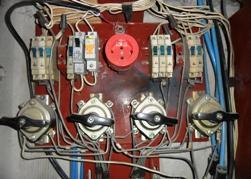 Electrical engineering is an exact science and here, unlike such ephemeral areas of human activity as, for example, design, there are clearly documented norms and rules (PUE, GOSTs, instructions), and not just “like” or “don't like”. Yes, PUE is “the bible of an electrician” and the formidable phrase “read in PUE” speaks of the importance, pumpability and great seriousness of those who said it.
Electrical engineering is an exact science and here, unlike such ephemeral areas of human activity as, for example, design, there are clearly documented norms and rules (PUE, GOSTs, instructions), and not just “like” or “don't like”. Yes, PUE is “the bible of an electrician” and the formidable phrase “read in PUE” speaks of the importance, pumpability and great seriousness of those who said it.
But it turns out in life is always much more complicated everything is arranged than it is written even in the wisest books and these books can be interpreted in different ways. Particularly heated discussions among electricians in electrical forums raise questions related to the grounding of electrical installations and the installation of residual current devices (RCDs). It so happened that in our time in everyday life there are simultaneously two grounding systems TN-C and TN-C-S ...
Ten Frequently Asked Questions About Energy Saving Lamps
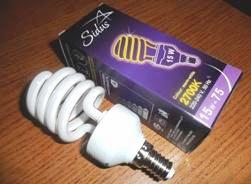 Question: In which case is it economically viable to use energy-saving lamps?
Question: In which case is it economically viable to use energy-saving lamps?
The average life of an incandescent lamp is 1000 hours, and that of an energy-saving lamp (depending on type and manufacturer) is 10,000 hours, and it is five times more economical.
Energy-saving light bulbs are the smart choice for luminaires that work for at least three hours a day. In this case, by reducing the cost of paying for electricity, an energy-saving lamp will pay off in about 3 years. And since all types of energy-saving bulbs live longer than traditional incandescent bulbs, then after the bulb pays off, you begin to "earn" money to save electricity.
Question: How are compact fluorescent lamps arranged and what are their advantages over incandescent lamps? ...
Voltage regulator for smooth regulation of power on the load
 To begin with, what is a voltage regulator and where did it come from? The regulator described in the article “How to properly manage warm floors?” Is considered. There I told how to use it to control warm floors. In this article, I propose to get inside this device, see what it consists of, how to properly connect the load to it.
To begin with, what is a voltage regulator and where did it come from? The regulator described in the article “How to properly manage warm floors?” Is considered. There I told how to use it to control warm floors. In this article, I propose to get inside this device, see what it consists of, how to properly connect the load to it.
So, the voltage regulator is a universal device designed for use in a wide range of areas: for automation and control systems for lighting, ventilation, indoor climate, for integration into smart home systems, for smooth starting of asynchronous and synchronous motors and other tasks where there are the need for smooth regulation of power at the load. Structurally, the voltage regulator has a modular design ...
How to manage underfloor heating?
 The typical designs of our residential buildings make residents think about the heat arrangement of their home on their own. Poor central heating, which is not enough in winter to heat a standard room, forces us to go for additional heating systems.
The typical designs of our residential buildings make residents think about the heat arrangement of their home on their own. Poor central heating, which is not enough in winter to heat a standard room, forces us to go for additional heating systems.
There are quite a few varieties of underfloor heating systems on the market, all of them have one drawback - the lack of a soft start, that is, an electrical load is added due to the closure of the relay coils, and, as a result, huge starting currents, voltage sagging. From such currents, the wiring wears out faster and, as a result, a fire is likely.
For modern warm floors, a control module is offered that monitors the status of the system and adjusts the floor temperature. Very convenient technology, which is also not without a drawback ...
Protection against leakage currents: RCD and difavtomat
 According to the current rules for the installation of electrical installations, the wiring of rooms with increased danger must be equipped with protection against leakage currents. In a residential apartment, a room with increased danger is considered to be a bathroom.
According to the current rules for the installation of electrical installations, the wiring of rooms with increased danger must be equipped with protection against leakage currents. In a residential apartment, a room with increased danger is considered to be a bathroom.
Often, such a room is considered a kitchen. Both there and there may be a higher air temperature, tightness of space and high relative humidity. These factors lead to the fact that the insulation of wires and electrical equipment wears out faster, and the contact voltage increases to deadly values.
In order to eliminate this danger, protection against leakage currents is established, which is usually implemented on the basis of a residual current device (RCD) or differential circuit breaker ...
On the origin of the terms "anchor" and "rotor"
 The electrical term “anchor” is much older than the word electrical engineer. In the era of great geographical discoveries and the development of navigation in the oceans, there was an urgent need for magnetic compasses, the main part of which was the magnetic needle. These arrows were made of iron and magnetized by natural magnets. There were simply no others.
The electrical term “anchor” is much older than the word electrical engineer. In the era of great geographical discoveries and the development of navigation in the oceans, there was an urgent need for magnetic compasses, the main part of which was the magnetic needle. These arrows were made of iron and magnetized by natural magnets. There were simply no others.
Good magnetization also required good magnets. To enhance the action of natural magnets, they were reinforced with iron, attaching it to the stone using non-magnetic frames made of copper, silver and even gold.
Magnets were expensive. The magnet set also included a removable iron block, which “stuck” to the poles of the magnet. This bar had on one side a ring, hook or decorative copy of the sea anchor ...
PPE caps insulating for twisting wires
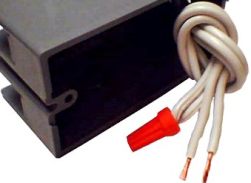
The connection of the conductors of wires of any electrical wiring should be carried out only with the help of certified clamps, simple twisting, even with the use of electrical tape, are not allowed. When it comes to household wiring, the caps insulating caps of PPE are very often used as such clamps.
The main reason for their mass distribution is ease of use. What are they like?
The PPE cap is, oddly enough, really a cap made of plastic compound that does not support combustion. Inside this cap is a conical metal spring. When the PPE is twisted with effort into twisting, the coil of the spring moves apart and compresses the wires of the wires, and the plastic cover of the cap provides electrical insulation, fire protection ...
Reed switches: control methods, examples of use
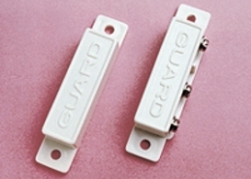 Reed switches have a number of mechanical and electrical parameters that characterize their properties. These parameters can be divided into two large groups: mechanical and electrical.
Reed switches have a number of mechanical and electrical parameters that characterize their properties. These parameters can be divided into two large groups: mechanical and electrical.
The mechanical parameters include the magnetomotive actuation force. This parameter shows at what value of the magnetic field the contact is released and released. In the technical documentation, this is referred to as the magnetomotive actuation force (denoted by Vav) and the magnetomotive releasing force (denoted by Votp).
Important parameters of the reed switch, in some cases the main ones, is the speed of its operation and release. These parameters are usually measured in milliseconds and are designated respectively as tav and totp, which generally characterize the speed of the reed switch ...
DIY computer power supply repair
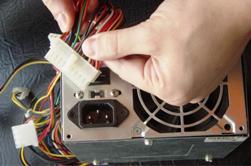 The low reliability of Russian power grids is the reason for the failure of household equipment. In the system units of stationary computers, after the operation of the operating system is completed, despite the apparent inactivity, the power supply remains permanently connected to the network. In this state, he is at risk of exposure to power surges.
The low reliability of Russian power grids is the reason for the failure of household equipment. In the system units of stationary computers, after the operation of the operating system is completed, despite the apparent inactivity, the power supply remains permanently connected to the network. In this state, he is at risk of exposure to power surges.
The use of network filters is corrected only by the fact that they have a shutdown button, which is more effective protection than the specified protective and filtering functions.
If you have installed a high-quality power supply of famous manufacturers and power exceeding 400 watts, then it is more reasonable to buy a new one may be an attempt to self-repair a failed power supply. First of all, you need to remember that the power supply is used ...
What are reed switches, how they are arranged and work
 Switching devices or just contacts are very widely used in various electrical and radio equipment. In order to improve operational properties, first of all, the service life and reliability of the connection, magnetically controlled sealed contacts called reed switches were developed.
Switching devices or just contacts are very widely used in various electrical and radio equipment. In order to improve operational properties, first of all, the service life and reliability of the connection, magnetically controlled sealed contacts called reed switches were developed.
The first samples of such contacts appeared back in the 30s of the last century, and the first magnetically controlled contact was invented in 1922 in St. Petersburg by Professor V. Kovalenkov, for which he was issued the USSR copyright certificate No. 466.
In fact, this was the very first magnetically controlled contact, only without a sealing shell. A similar contact was first placed in the sealing shell by an American engineer W.B. Ellwood only in 1936 ...
Homemade dimmers. Part Five Some more simple schemes
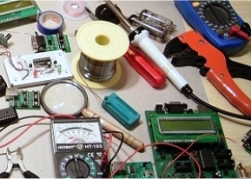 A dimmer on the analog of a single junction transistor. Despite the absolute dissimilarity of the schemes at first glance, they work almost identically. The brightness of the lamp is controlled by the phase method of controlling the thyristor, however, the load connection is somewhat different.
A dimmer on the analog of a single junction transistor. Despite the absolute dissimilarity of the schemes at first glance, they work almost identically. The brightness of the lamp is controlled by the phase method of controlling the thyristor, however, the load connection is somewhat different.
In the considered circuit, the regulator load, a light bulb, is included in the diagonal of the rectifier bridge for alternating current. The thyristor itself is included in the diagonal by a constant, rectified current.
On transistors VT1, VT2 assembled node smooth start, but for now, consider the operation of the regulator. If we mentally draw a vertical line between the VT2 transistor and the resistors R3 and R4, then everything that turns out to be to the right of this line is the actual dimmer ...
To become a good electrician you need to constantly engage in self-education
 IN Visiting the site bgv.electricianexp.com, one of the best teachers of the Gomel State Polytechnic College Sergey Aleksandrovich Nikulin, who kindly agreed to cover some of my questions.
IN Visiting the site bgv.electricianexp.com, one of the best teachers of the Gomel State Polytechnic College Sergey Aleksandrovich Nikulin, who kindly agreed to cover some of my questions.
1. Sergey, you have been working at a college (technical school) for about 10 years now. Has anything changed during this time? How has the educational process and student attitudes changed?
A college (technical school) is the next stage of education after school or a vocational school and, unfortunately, in recent years, applicants who come to us have a low general level of knowledge, learning ability and desire to study. The capabilities of many of them do not allow them to master the specialty "electrician", in my opinion, quite complicated. But we have no other contingent, and therefore, we are teaching “untrained” ...
